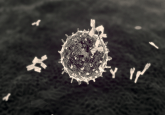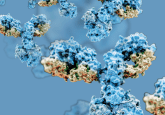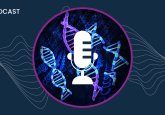First void urine: revolutionizing potential non-invasive biomarker collection for clinical diagnostics
Join Tara Crawford Parks, Director for Translational R&D and Product Enablement at DNA Genotek, to explore the potential of first void urine biomarkers in clinical diagnostics. Discover how this non-invasive sampling method is transforming HPV screening and opening new possibilities for early disease detection in oncology and infectious diseases. Learn about the science behind first void urine collection, its advantages over traditional sampling methods, and how innovative devices like the Colli-Pee™ are supporting more accessible healthcare for underserved populations worldwide.
About the Speaker:

Tara Crawford Parks, PhD
Director, Translational R&D and Product Enablement
DNA Genotek (Ontario, Canada)
An experienced scientific leader with expertise in areas of cellular and molecular biology focused on translational medicine and human health, Tara Crawford Parks is a Director of Translational R&D and Product Enablement at DNA Genotek. She completed her PhD at the University of Ottawa (Canada), focusing on RNA-binding proteins in skeletal muscle differentiation and their implications in neuromuscular disorders.
Additionally, Tara led a research group in project design and execution of novel research in the area of cancer biology, including rhabdomyosarcoma, prostate cancer and glioblastoma. She went on to complete her postdoctoral studies in novel cancer research targeting RNA-binding proteins in these disease areas. She is dedicated to research and business initiatives that deliver high-quality, innovative products that impact precision medicine and human health.
Podcast transcript
[00:08] Ellen Williams: Hello and welcome our podcast episode exploring first-void urine biomarkers and their use in clinical diagnostics. I’m your host, Ellen Williams, and today I’m joined by Tara Crawford Parks, Director for Translational R&D and Product Enablement at DNA Genotek.
[00:27] Ellen Williams: Let’s get straight into our topic for today, so could you start by explaining what first-void urine is and how it’s different from a standard urine sample?
[00:36] Tara Crawford Parks: Yeah, absolutely. First void urine, which can also be referred to as first-catch or first-pass urine, refers to that first fraction of urine that’s produced up to the first 50 milliliters when somebody is urinating. And this fraction exhibits elevated concentrations of biomarkers, whereas a standard urine sample, which is often a midstream urine sample, contains lower levels of these biomarkers since that initial urine flow that goes into the toilet first has washed away much of the analytes from the bladder, urethra and genitals. And the World Health Organization (Geneva, Switzerland) considers first void urine the preferred sample type for many nucleic acid amplification tests, such as those for STIs, for example, chlamydia and gonorrhea testing are required to use first-void urine as the sample input.
First void urine can be collected at any time of the day during any urination. And as an accumulation of those biological materials occurs in the urethra and the lower urinary tract between the urinations, the first portion of that urine then washes it away. And it contains those, you know, there’s epithelial cells in there, there’s mucus, potential pathogens or extracellular vesicles, and then there’s nucleic acid biomarkers as well, such as DNA and RNA in that first void fraction.
And so, due to this higher concentration of biomarkers in first void urine, it really does have a significant potential to support research and screening applications that are looking at these targets. So there’s a lot of ongoing research right now in the oncology space and infectious disease. And this first void fraction has a lot of potential in those areas.
First void urine, however, is much more difficult to collect accurately when you’re only using a urine cup, since it’s a very small volume of first void. And when you collect it into a urine cup, there’s a higher risk that you are diluting the sample with that initial stream and over-collecting a sample. So we’ve developed the Colli-Pee device to accurately and easily collect first void urine, which really allows for a standardized collection, as well as the option for stabilization of the first void urine fractions with our proprietary chemistries, which can be designed to support various research applications.
[03:04] Ellen Williams: Great, thank you. That was a really nice summary. So you touched on a couple of them there very briefly, but could you please list out a couple of the biomarkers that can be found in first-void urine samples?
[03:15] Tara Crawford Parks: [A] first void urine fraction really contains a wide array of analytes, which can include cell-free or cellular DNA and RNA, extracellular vesicles, proteins, metabolites, for example. And these analytes really do have potential to be leveraged in various ‘omic technologies that may provide insights into human health and disease through methodologies such as genomics, epigenomics, transcriptomics, proteomics, metabolomics, and even metallomics. So there’s a wide array of applications for these biomarkers and first void urine is really just the source of a high-quality sample as an input into those downstream technologies.
[03:58] Ellen Williams: So can you talk us through the current and emerging applications for first void urine in clinical diagnostics?
[04:04] Tara Crawford Parks: Yeah, that’s a great question. And I’ll focus on the emerging applications first, where there’s a lot of potential with that high presence of biomarkers in first void urine, where it’s more concentrated than your midstream urine sample, having potential to be included as a sample type for the identification of early disease onset in the oncology space, for example, in prostate cancer, breast cancer or endometrial cancer. And there’s also the opportunity for first void urine to have utility to detect other diseases such as endometriosis. And the possibility to screen with a non-invasive sample type like first void urine really can open wider access to individuals who are looking to have early detection and may potentially catch diseases earlier before they’ve progressed. And first void urine, having that concentrated amounts of those potential analytes and biomarkers really is well positioned to be considered as a sample type for future disease monitoring in those various diseases that I mentioned.
One current and leading application that first void urine is being evaluated for in the oncology space is its capability of screening for HPV (Human Papillomavirus). And it’s been evaluated for its utility on a broad range of molecular platforms and assays designed for HPV screening. And again, this first void urine sample really offers a non-invasive alternative for HPV screening in comparison to the much more invasive sample types, such as vaginal swabs or clinician-collected endocervical swabs, that are the standard of care today for HPV. Many clinical studies have been conducted globally, leveraging the Colli-Pee and its unique design to collect that first void urine sample in the HPV space. And the results are really striking and show that first void urine really does allow for that self-collection of a sample, that it’s preferred by many participants, that it’s a really nice non-invasive sample type that could have the potential to expand screening access, especially to those who are underscreened or never screened for HPV.
[06:27] Ellen Williams: Great. Thank you, Tara. So how is first void urine being used to screen for HPV specifically? And how does it compare to other HPV screening methods?
[06:36] Tara Crawford Parks: So the Colli-Pee device provides a non-invasive alternative to vaginal swabs and clinician-collected cervical swabs that are used today for HPV screening. And there is a lot of emerging data across various clinical trials to support the non-inferiority to those standard-of-care samples for HPV detection. And there’s been an influx of scientific publications stemming from Europe and the UK over the last several years, which have compared first void urine samples collected with the Colli-Pee device compared to vaginal swabs and clinician-collected samples. Some of these studies include the VALHUDES trial, PREDICTORS 5.1 study, the COCUS trial, and the CASSIS study. And each of these studies has provided robust data to support the potential utility of the Colli-Pee device for the screening of high-risk HPV.
Another critical aspect of first void urine is the collection method itself. Clinical-collected cervical samples are very invasive and this limits the access to those who are able to visit a clinical site and can have a lower rate of acceptance among individuals who may have experienced trauma in their past or have cultural and religious beliefs that don’t allow invasive sampling, among other preferences. First void urine offers a non-invasive solution to these individuals to allow them to self-collect. And data collected across these various studies that I mentioned highlights a preference compared to vaginal swabs and the clinical-collected samples.
For example, the CASSIS study, which was recently published in February of 2025, showed a high preference for first void urine self-sampling, with two-thirds of the female donors preferring home-based first void urine self-sampling using the Colli-Pee device compared to a physician-collected cervical sample. And in addition, in that study, 96% of the participants found that the Colli-Pee device was easy to use and stated that they would use it again. In the other studies that I mentioned, the researchers found that across the board that the Colli-Pee device really is a viable alternative to support expanding access to people facing challenges in terms of barriers to accessing HPV screening.
[09:00] Ellen Williams: Great, thank you, Tara. And to finish off, what are some of the logistical, economical and cultural considerations for implementing first void urine-based screening programs at scale, particularly in resource-limited settings or decentralized healthcare models?
[09:18] Tara Crawford Parks: That’s a great question. So, broadly, non-invasive sampling methods like first void urine have growing evidence to support that they can remove barriers to screening and as such, increase accessibility in healthcare. For those who are underscreened or never screened due to social and cultural barriers, the Colli-Pee device really has strong potential to serve as that non-invasive method for self-collection, for example, in HPV screening. And there’s a few levels to how I would answer your question. So, first, it reduces the physical and psychological barriers. So, many of those standard-of-care sample collection methods, as I mentioned, require invasive sampling procedures, which can often be distressing for people. And this then really encourages participation from individuals who avoid clinical settings due to fear, stigma or past negative experiences. Non-invasive sampling can also improve access for underserved populations by just enabling that self-collection piece. So, you’re reducing the need for travel or taking time off work or finding childcare, which are often more common barriers for low-income or rural populations. And that non-invasive self-collection allows for increasing the access to screening in areas with low access to health centers and people who may not engage with traditional healthcare systems. So, you’re really reaching a population of individuals who currently may not be monitored for HPV in our healthcare system.
And thirdly, it can also empower patient autonomy. It can reduce systemic biases. Having non-invasive screening options really gives individuals that control over their own health and their own health data and how they want their health to be monitored. And this really allows for increased comfort and privacy and becomes an even bigger benefit for marginalized groups, such as the LGBTQ+ population or those with non-binary gender identities. And so, we believe that having non-invasive self-collection options, such as the Colli-Pee device, we’re offering solutions for a wider range of individuals in these populations that perhaps aren’t seeking healthcare through the standard methods today.
And lastly, the Colli-Pee device is really designed to preserve samples at that point of collection. So, when you’re taking sample collection outside of a clinic, you need to ensure that the quality of that sample is still high and that you can still trust it once it gets to a facility where it undergoes testing. And so, as I mentioned, our Colli-Pee devices come with different stabilizing preservatives for the sample. And when the person collects, it instantly mixes with that stabilization solution, which ensures sample quality at time of collection and are also designed to eliminate the need for cold chain shipping. So, this really expands the potential reach for sample collection. It could be leveraged in decentralized programs. It reduces costs overall, really simplifying those study workflows and setting those study designs up for better scalability for these programs aimed at screening for HPV, as well as research in the area.
So, in totality, we really see these aspects of first void urine providing a potential alternative to those who are underscreened or never screened and potentially allowing for greater access overall for HPV screening. Although it’s a little further behind, we do also envision the potential of these same advantages to expand into the oncology space as the technology allows for the detection of biomarkers from a first void urine sample. We believe that the Colli-Pee is really well-positioned to more broadly support non-invasive sample collections in the infectious disease and oncology space.
[13:40] Ellen Williams: Thank you very much, Tara, for your time today. It’s been really, really great to speak with you.
[13:45] Tara Crawford Parks: Thank you so much for having me.
[13:47] Ellen Williams: As always, you can find our entire podcast collection on Bioanalysis Zone under Multimedia. Thank you very much to everyone who listened in and thank you again for your time, Tara.
[13:57] Tara Crawford Parks: Thank you.
Disclaimer: The opinions expressed in this interview are those of the author and do not necessarily reflect the views of Bioanalysis Zone or Taylor & Francis Group.
In association with:







